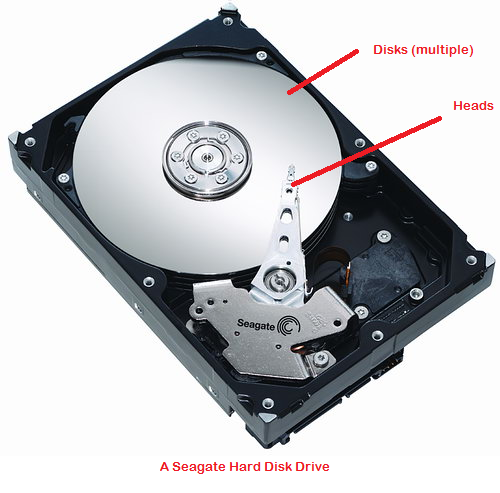Data Remanence refers to the remnants of (magnetized) data that are left even after safely wiping data from your hard disks or pen drives. Sometimes, even formatting a disk does not remove the entire data and leaves behind enough characters to rebuild the data on that disk. Of course, a person attempting to access deleted data uses special software and hardware. In this post, we’ll see what is Data remanence and how to eliminate it.

What is Data Remanence
When data is deleted using the Delete command in the context menu, it simply removes the address of the deleted file from the file allocation table. Such data can be recovered using different data recovery software. That’s why people want to erase all data securely using specially designed secure delete software.
These software for recovering data, write random data over the deleted files. However, these software as well as formatting a disk, always leave some data behind. These bits of data can be recovered, and information can be reconstructed. That is why we need special software to completely wipe of deleted data from any magnetic storage.
In some cases, the size of hard disk drives’ head is different. So it is possible that when magnetic storage is deleted, it can still be recovered using a different head size. The term ‘head’ here refers to the read/write head present in hard disk drives and tapes.
To erase data securely so that it cannot be reconstructed, there are some tools available about which we’ll talk in the sections below. For now, it is important to know that data cannot be completely deleted from any storage. So people use overwriting as a solution to make the remnant data irrecoverable.

How to completely delete remnant data?
The term “Remnant” refers to whatever (magnetism) is left after deleting big chunks (of data on storage devices). There are a couple of good methods to eliminate data remanence:
- Secure Erase HDD Commands
- Degaussing
- Media Destruction.
Please note that there are programs such as CCleaner that talk of securely erasing your data. They do try to erase data by overwriting the files to be deleted. That is to say, they write 1’s and 0’s over and over again, on the parts of storage to be deleted so that recovery becomes difficult. That does not completely remove the data and remnants will still be there.
If such hard disk drives and magnetic tapes are thrown away or given to anyone else, there is a good probability that the person who gets the “cleaned” drive or tapes may still be able to recover the bits for reconstructing the data that was attempted to be cleaned.
1] Eliminate Data Remanence – Secure HDD Commands
Secure Erase is a set of command-line commands that act on the firmware and hence won’t be able to communicate directly with the Hard Disk Drive to be deleted. They can be used with third-party software so that the commands are executed. There are third party HDD Erase tools that run these commands to securely erase data. An example of such a tool is DBAN (Darik’s Boot and Nuke).
The Secure Erase data removal method is implemented by writing 0 or 1 to the whole drive be to be wiped. You already know that computers use binary language that has either 0 or 1 as characters.
As said earlier, the data destruction commands of Secure Erase cannot directly act on Hard Disk Drive even if you issue them using elevated Command Prompt. You have to use solutions that either let you modify firmware or have already built-in tools to issue commands to the firmware.
Please note that Secure Erase HDD Commands might not work on SSDs. If you have to delete an SSD, you have to either degauss it or physically destroy the whole SSD.
Another issue with Secure Erase Commands is that they cannot delete hard disk drives in part. They are used only when the whole hard disk drive is to be sanitized before throwing it away or before giving the HDD to someone/charity/schools etc.
To clean parts of hard disk drives such as files and folders, you may download and use Eraser. It is capable of removing reminiscence
2] Sanitizing HDDs: Degaussing method
The term “degaussing” refers to the removal of the magnetic field from magnetic storage drives: hard disk drives and tapes. When you degauss a magnetic disk drive, you simply remove the marked tracks and sectors thereby making the disk inoperable. It removes the basic magnetism which holds data. Without that, data is not readable because the file allocation table with then not know how to access any data still stored on the drive. And since it destroys the magnetic plates, it can’t be used again.
3] Physical Media Destruction to eliminate data remanence
In cases where it is too personal data on the drive or a question of security, the recommended method is to physically destroy the disk. Use something like a hammer to open up the case. Then strike on the magnetic plates to remove them from their compact case. Once exposed, each plate of the HDD can be removed and burned. Do not throw HDDs into a fire without removing their cases. They may explode.
The above explains what is data remanence and how to eliminate it. I am sure there may be more methods to destroy such remnants. If you know of one that I didn’t cover, please share it with us in the comments below.
Leave a Reply